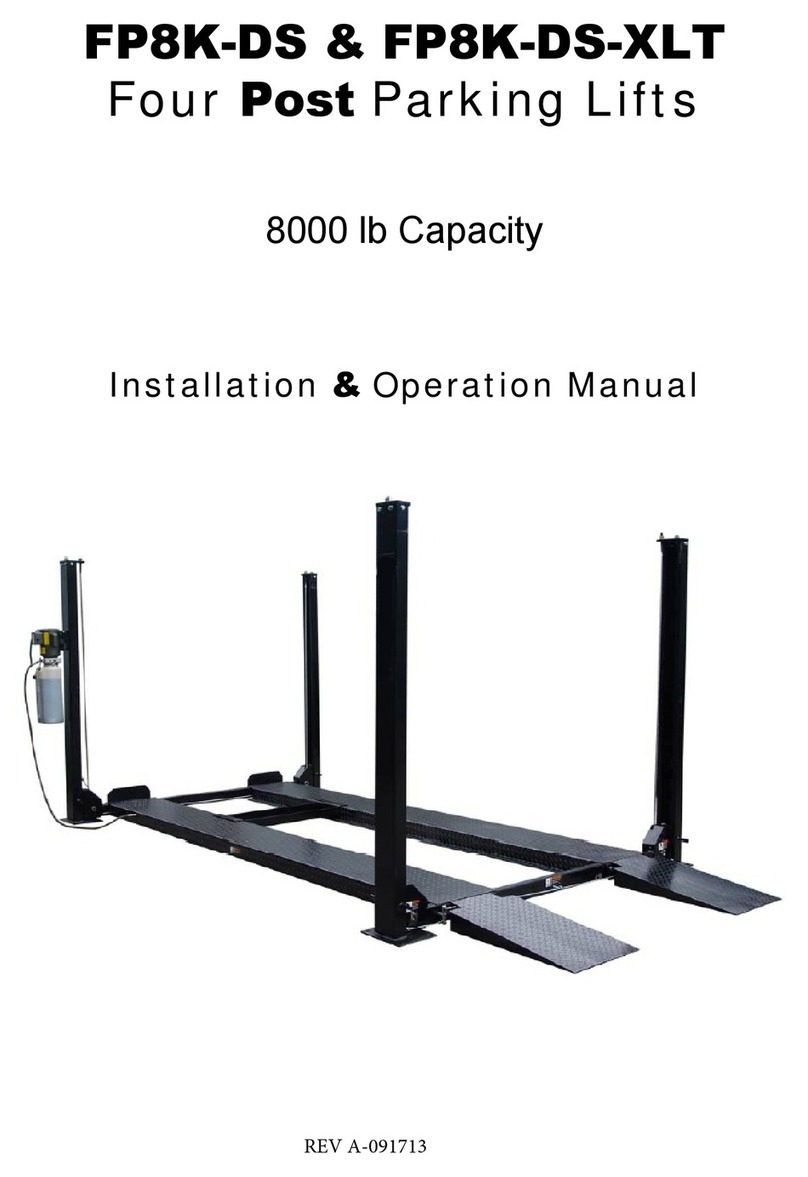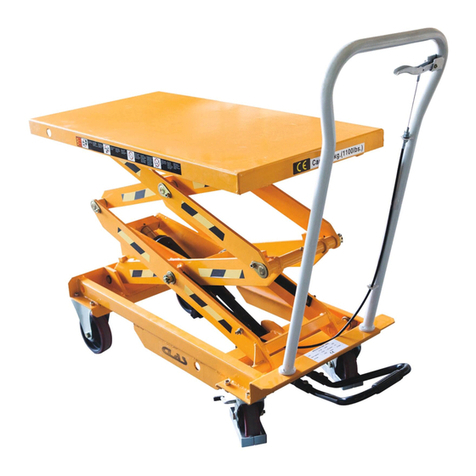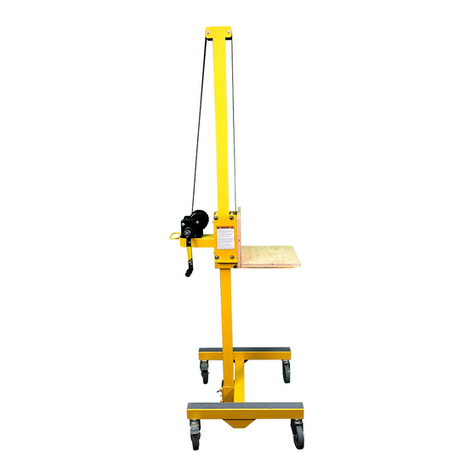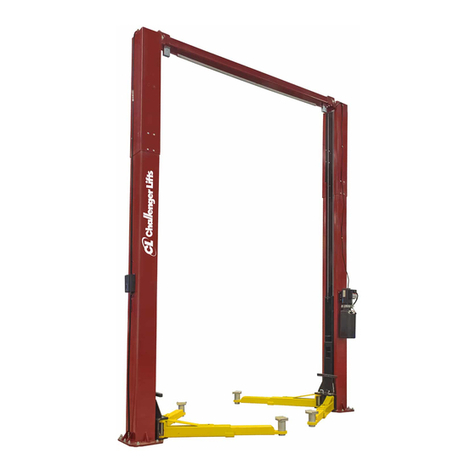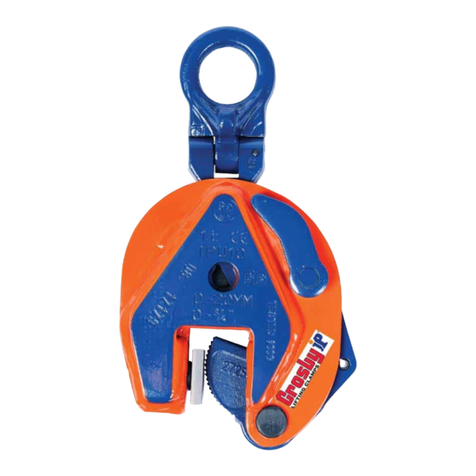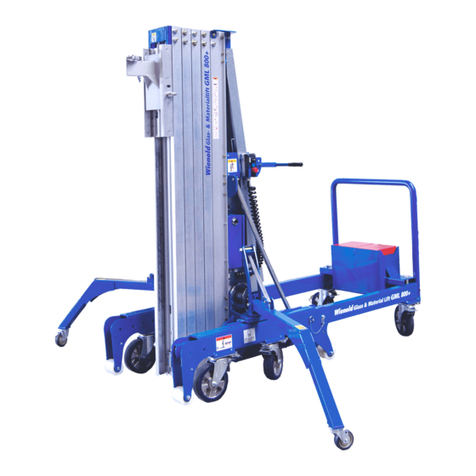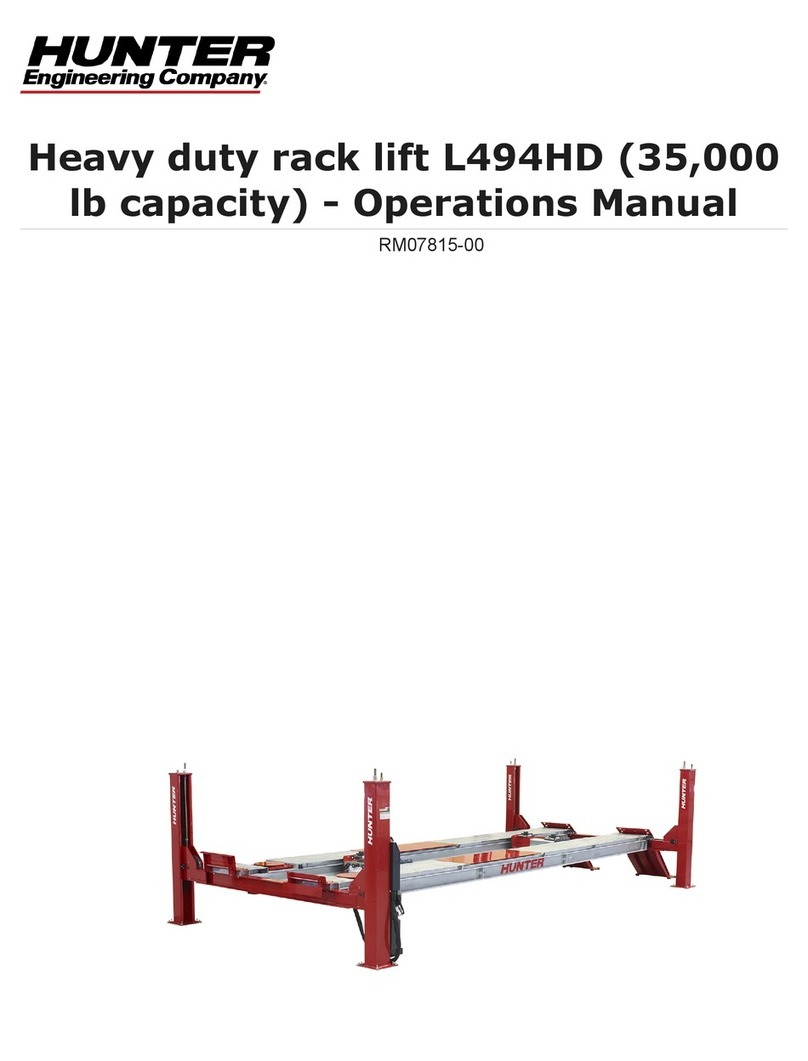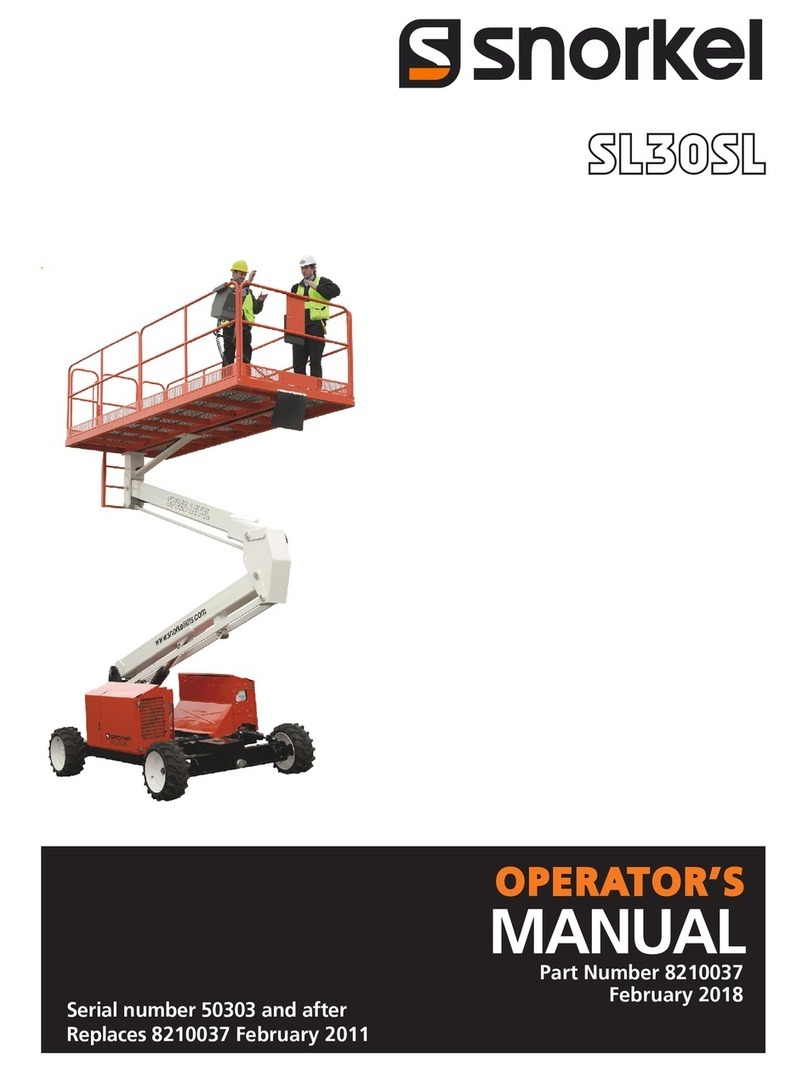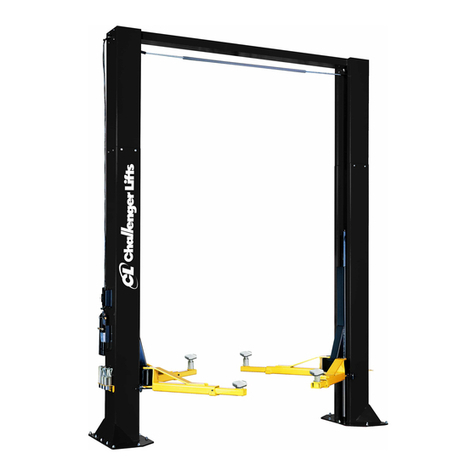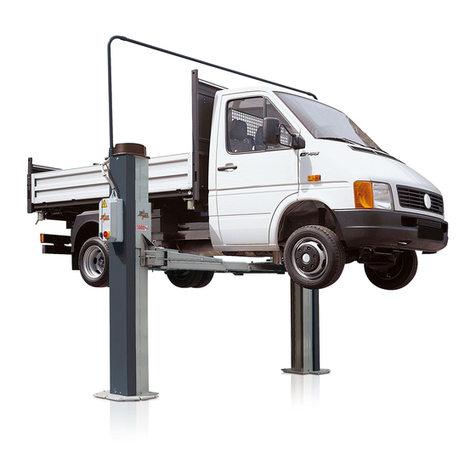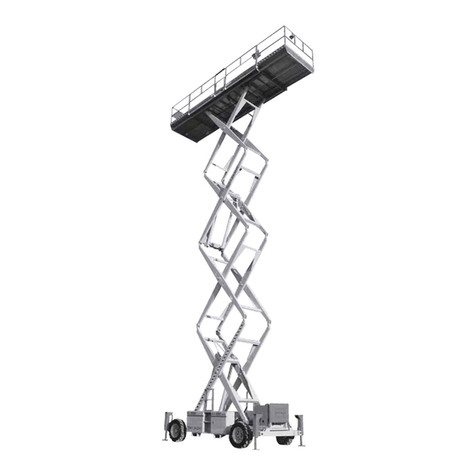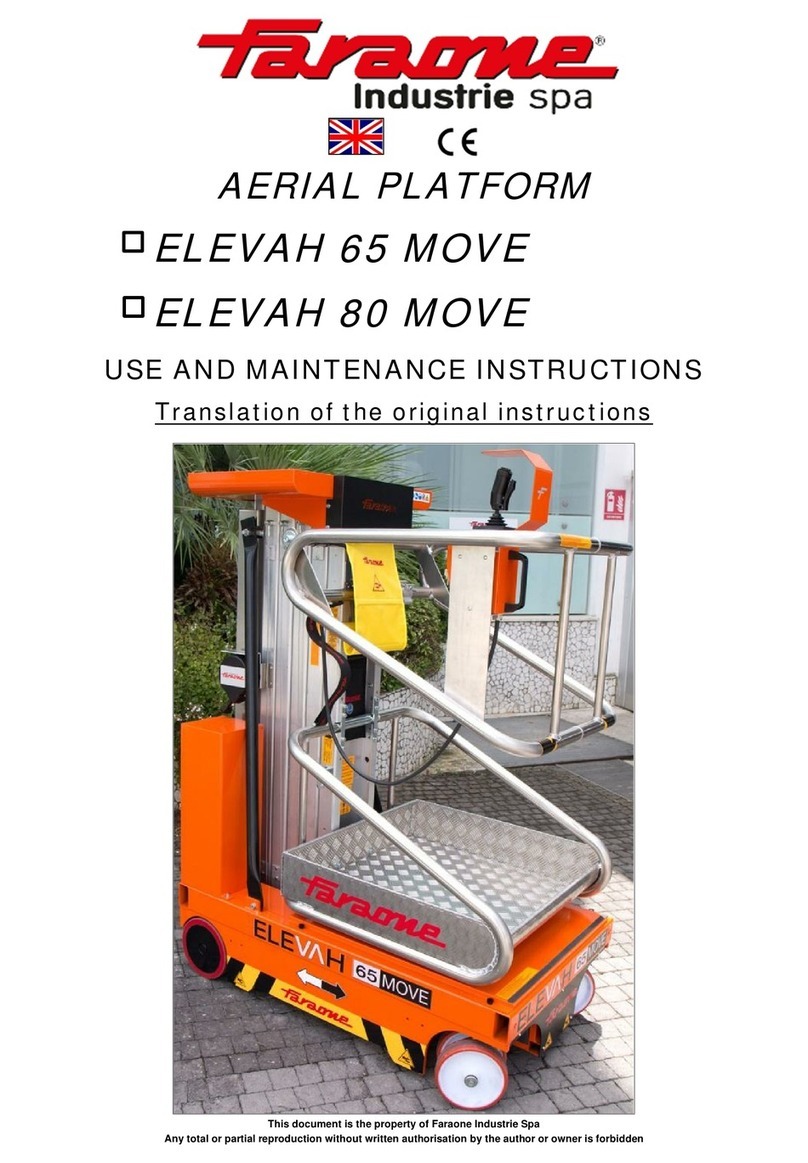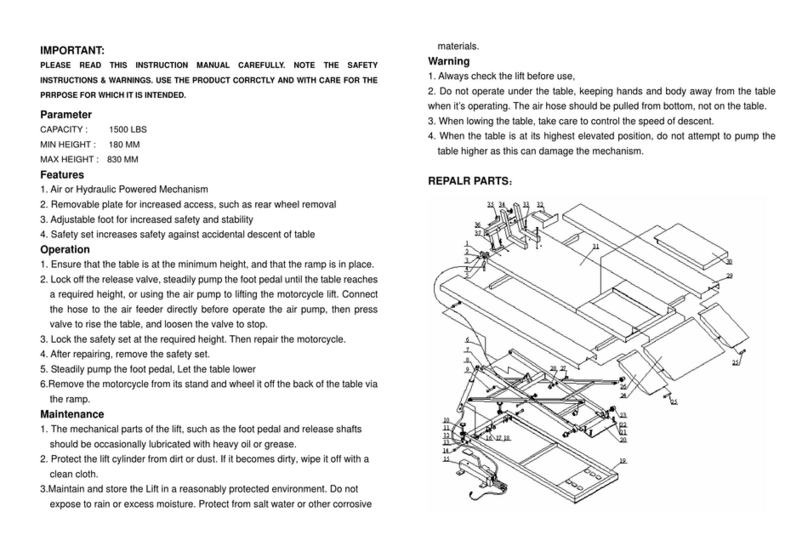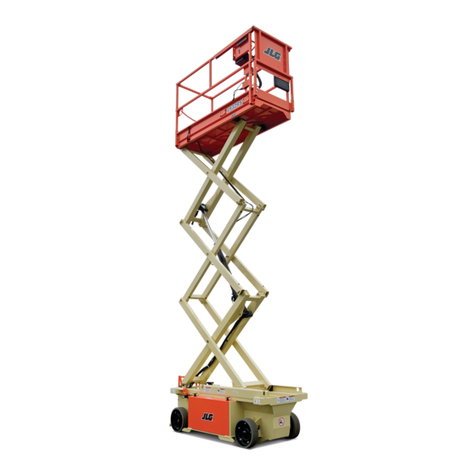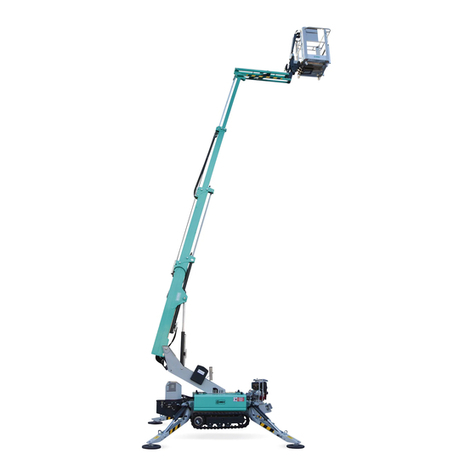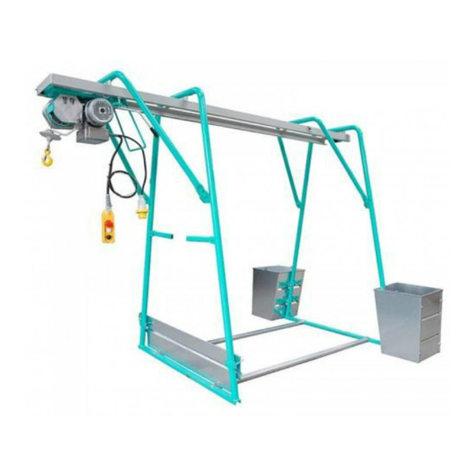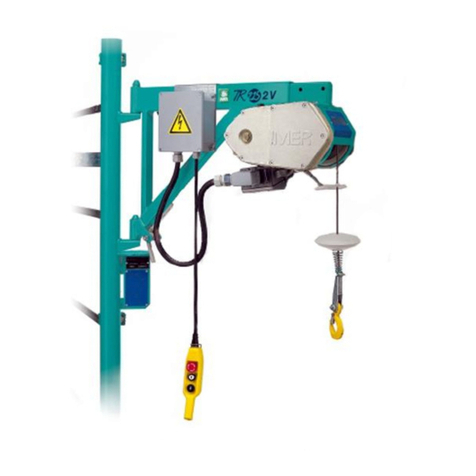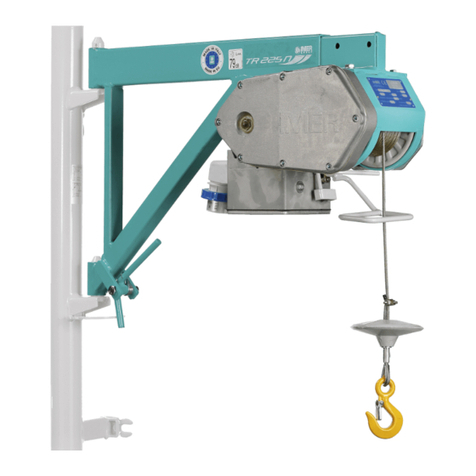18
IMER INTERNATIONAL S.p.A.
ET 150 N
4. ANSCHLUSS AN DAS STROMNETZ
- Kontrollieren, ob die Versorgungsspannung den Daten des
Typenschildes der Maschine entspricht.
- Außerdem kontrollieren, ob die Leitungsspannung bei
funktionierendem Seilaufzug zwischen -10% und +6% des
Nennwertes beträgt.
- Die Stromleitung muss gegen Überlastung geschützt und mit einem
Differentialschutz ausgestattet sein. Der Erdleiter muss denselben
Querschnitt wie der Leiter aufweisen.
Bei der Bemessung der Leiter sind der Anlaufstrom und die
Leitungslänge zu berücksichtigen, damit übermäßiger Spannungsabfall
vermieden wird (Bez. Tab.1).
Auf Trommeln aufgewickelte Verlängergungskabel vermeiden.
'DV9HUVRUJXQJVNDEHOPXVVIUKlX¿JH%HZHJXQJHQDXVJHOHJWXQG
mit einer reibfesten Ummantelung ausgestattet sein (z.B.: H07RN-F).
- Den Netzstecker der Maschine an einer CEE-Steckdose (16 A) mit
Schutzart IP67 anschließen und mit der mechanischen Zwinge sichern.
- Der Seilaufzug ist somit für den ersten Probelauf bereit.
5. ANLEITUNGEN FÜR DIE ABNAHMEPRÜFUNG
- Achtung! Diese Prüfung muss durch kompetentes
Fachpersonal und unter Anwendung der erforderlichen
Vorsichtsmaßnahmen für die Sicherheit des Personals erfolgen.
-Achtung: Die Abnahmeprüfung muss in jedem Fall vor
dem erstmaligen Einsatz des Seilaufzugs durchgeführt werden.
Vor Beginn der Prüfung sorgfältig kontrollieren, ob alle
Installationsarbeiten korrekt ausgeführt wurden.
1) Das Seil durch Betätigen der Abwärtstaste leer bis zum unteren
Ladebereich absenken und prüfen, ob am Endanschlag mindestens
drei Wicklungen auf der Trommel verblieben sind.
2) Leerzyklus-Probe(LQHNJVFKZHUH3UÀDVWDXIGHP6HLODXI]XJ
anbringen und den einwandfreien Betrieb durch Ausführung eines
kompletten Auf- und Abwärtslaufs überprüfen.
Aufwärts-, Abwärts- und der Stopp-Taste, das Auslösen des oberen
Endschalters und das korrekte Aufwickeln des Kabels auf der
Trommel, sowie das Auslösen der Motorbremse ausprobieren.
3) Belastungsprobe. Dieser Test ist mit der für den Seilaufzug
maximal vorgesehenen Last auszuführen. Einen komplettenAufwärts-
und Abwärtslauf ausführen, um die Verankerungen des Seilaufzugs
und der Bremsvorrichtung des Elektromotors zu kontrollieren.
Nach dem Test ist festzustellen, ob die Tragkonstruktionen
nachgegeben haben oder Setzungen zu verzeichnen sind. Hierzu die
horizontale Ausrichtung der Trommel nachprüfen (unter Verwendung
einer Wasserwaage, siehe Abb.1).
4) Der Seilaufzug ist mit einer Sicherheitsvorrichtung ausgestattet,
welche den Hub der Maschine am höchsten Punkt (Bez.9) anhält.
(V HPS¿HKOW VLFK MHGRFK GHUHQ$XVO|VHQ GXUFK UHFKW]HLWLJHV
Loslassen der entsprechenden Taste und folgliches Anhalten der
Maschine zu vermeiden.
Wenn das Seil vollkommen abgewickelt ist, muss die in der Nähe
GHU0DVFKLQHEH¿QGOLFKH%HGLHQXQJVSHUVRQGDUDXIDFKWHQGDVV
die Wicklungsrichtung an der Trommel nicht umgekehrt wird.
Nach Abschluss der Probe muss das Datum, die Prüfung
der Installation, komplett mit Unterschrift und eventuellen
Anmerkungen in das Prüfungsprotokoll (Tab.2) eingetragen
werden.
Das beschriebene Prüfverfahren, komplett mit
Leerzyklus-Probe 2) und Belastungsprobe 3) muss bei jeder
neuen Installation der Maschine durchgeführt werden.
6. GEBRAUCHS- UND SICHERHEITSHINWEISE
- 1)Auf keinen Fall Lasten heben, welche die Tragfähigkeit
des Seilaufzugs überschreiten.
- 2) Sicherstellen, dass sich unter der schwebenden Last
keine Personen aufhalten.
- 3) Nicht versuchen am Boden verankerte Lasten (z.B.
Pfosten, Plinthen, usw.) zu heben.
- 4) Sicherstellen, dass die Last sicher am Haken des
Seilaufzugs befestigt ist und stets die Sicherung schließen.
- 5) Falls für das Einhängen der Last irgendwelches
Zubehör (Riemen, Seile, Gurte, usw.) erforderlich ist, muss
dieses geprüft und bescheinigt sein; das Gewicht dieser
Zubehörteile muss von der Höchstraglast abgezogen werden.
- 6) Während der Hubfahrt dürfen keine Lastteile hervorstehen.
- 7) Vor dem Lösen der Last muss sichergestellt werden,
REVLHVWDELODXÀLHJW
- 8) Hängende Lasten dürfen weder ruckartig gelöst
werden noch darf zum Abladen einer Last die Verzurrung
aufgeschnitten werden, da dies eine elastische Gegenreaktion
auf die gesamte Struktur bewirkt.
- 9) Während des Betriebs nicht die Hände oder andere
Körperteile in die Nähe der Trommel bringen, weil diese sich
sonst am aufwickelnden Seil verfangen könnten, wodurch
schwerwiegende Verletzungen hervorgerufen werden können.
- 10) Während des Betriebs nicht die Hände oder andere
Körperteile in die Nähe des Gegengewichtes bringen, weil
diese sonst am Hebel des Endschalters eingeklemmt werden
können.
- 11) Die Maschine nicht bei ungünstigen
Wetterverhältnissen (Wind oder Gewitter) gebrauchen, weil
die Last in einem solchen Fall nicht ausreichend geführt
wird. Die maximale Windgeschwindigkeit sollte 12,5 m/s
nicht überschreiten.
- 12) Die Bedienungsposition und die Beleuchtung muss auf
dem gesamten Arbeitshub die freie Sicht auf die Last ermöglichen.
- 13) Sicherstellen, dass alle Schutzvorrichtungen an
korrekt angebracht sind.
- 14) Während des Gebrauchs kontrollieren, ob sich das
Kabel korrekt Windung an Windung und ohne Lockerungen
oder Überlagerungen aufwickelt, welche das Kabel selbst
beschädigen könnten. Das Kabel in diesem Fall wieder
abwickeln, gespannt halten und korrekt aufwickeln.
- 15) Sicherstellen, dass der Arbeitshub auf der
gesamten Länge frei von Behinderungen ist und dafür Sorge
tragen, dass sich niemand aus den dazwischen liegenden
Stockwerken hinauslehnen kann.
- 16) Den unteren Ladebereich abgrenzen, damit sich
während des Hebens keine Personen dort aufhalten können.
- 17) Kinder vom Seilaufzug fernhalten.
- 18) Solange der Seilaufzug nicht gebraucht wird, muss
unbedingt vermieden werden, dass sie andere Personen
benutzen können.
- 19) Der Einsatz des Seilaufzugs für schräge
Förderbewegungen (mehr als 5° im Vergleich zur Senkrechten)
ist verboten.
- 20) Der Seilaufzug darf auf keinen Fall durch Ziehen
an der Druckknopftafel auf den Zapfen geschwenkt werden,
hierzu muss stets die Tragkonstruktion manuell gedreht
werden.
- 21) Schwebende Lasten nicht unbeaufsichtigt lassen,
sondern heben oder absenken und abladen.
- 22) Während des Hebens und Senkens die Last nicht
drehen lassen, weil sonst das Seil brechen könnte.
- 23) Bevor der Seilaufzug unbeaufsichtigt gelassen wird,
die Last abnehmen, das Seil ganz auf die Trommel aufwickeln
und den Stecker aus der Steckdose nehmen.
- 24) Beim Heben und Senken einer Last stets vorsichtig
vorgehen, abrupte Bewegungssteuerungen vermeiden, um
gefährliche horizontale und vertikale Schwingungen auf ein
Minimum zu beschränken.
- 25) Den Seilaufzug vor Regen schützen.
Vor jeder erneuten Inbetriebnahme nach einem längeren Stillstand
(beispielsweise bei Arbeitsbeginn am Morgen) muss der Lastenaufzug
durch Ausführung eines Leerzyklus geprüft werden (vgl. Anleitungen
unter Punkt 2, Kap. 5).
7. PRÜFUNGEN UND WARTUNG
Achtung! Alle Wartungsarbeiten müssen bei
stillstehender Maschine, abgehängter Stromversorgung und
ohne Last erfolgen.
- Reparaturen müssen von Fachpersonal oder in den IMER-
Kundendienst-Zentren ausgeführt werden.
- Verwenden Sie ausschließlich Original-Ersatzteile.





















